All Eyes on China, as Offline Multi-Brand Beauty Stores Boom
by Maggie Yu & Davy Huang
Beauty collection stores are quickly growing in China – as Chinese consumers’ appetite for beauty products continues to evolve. Most people's first thoughts may be Sephora, Watsons, or Mannings, where customers can get access to a wide range of skincare, make-up and fragrance products. The biggest advantage these retailers have is their wide selection of brands, product categories, and price ranges, with Sephora focusing more on high-end goods, and Watsons and Mannings offering mass market and daily use products, sourced both domestically and internationally. Consumers can buy all the products they need at once in a collection store, without having to go from one brand counter to another, and many are even located in communities that allow quick, unmanned access.
In China's highly competitive cosmetics industry, some new models of offline multi-brand beauty stores have emerged one after another, boosting cosmetics consumption, and gradually eroding the market share of the old, established players. According to data from iResearch, the market size of China's multi-brand beauty stores will be 41.9 billion yuan ($6.6 billion US) in 2020. Among them, the new multi-brand beauty store market share is expected to increase to 15.8% in 2023, the market size is expected to reach 13 billion yuan ($2 billion US).[1] Feeling the squeeze of beauty collection stores as new market entrants, Watson's performance growth rate declined and Mannings closed its stores extensively. The survival status of traditional beauty collection stores is not optimistic.
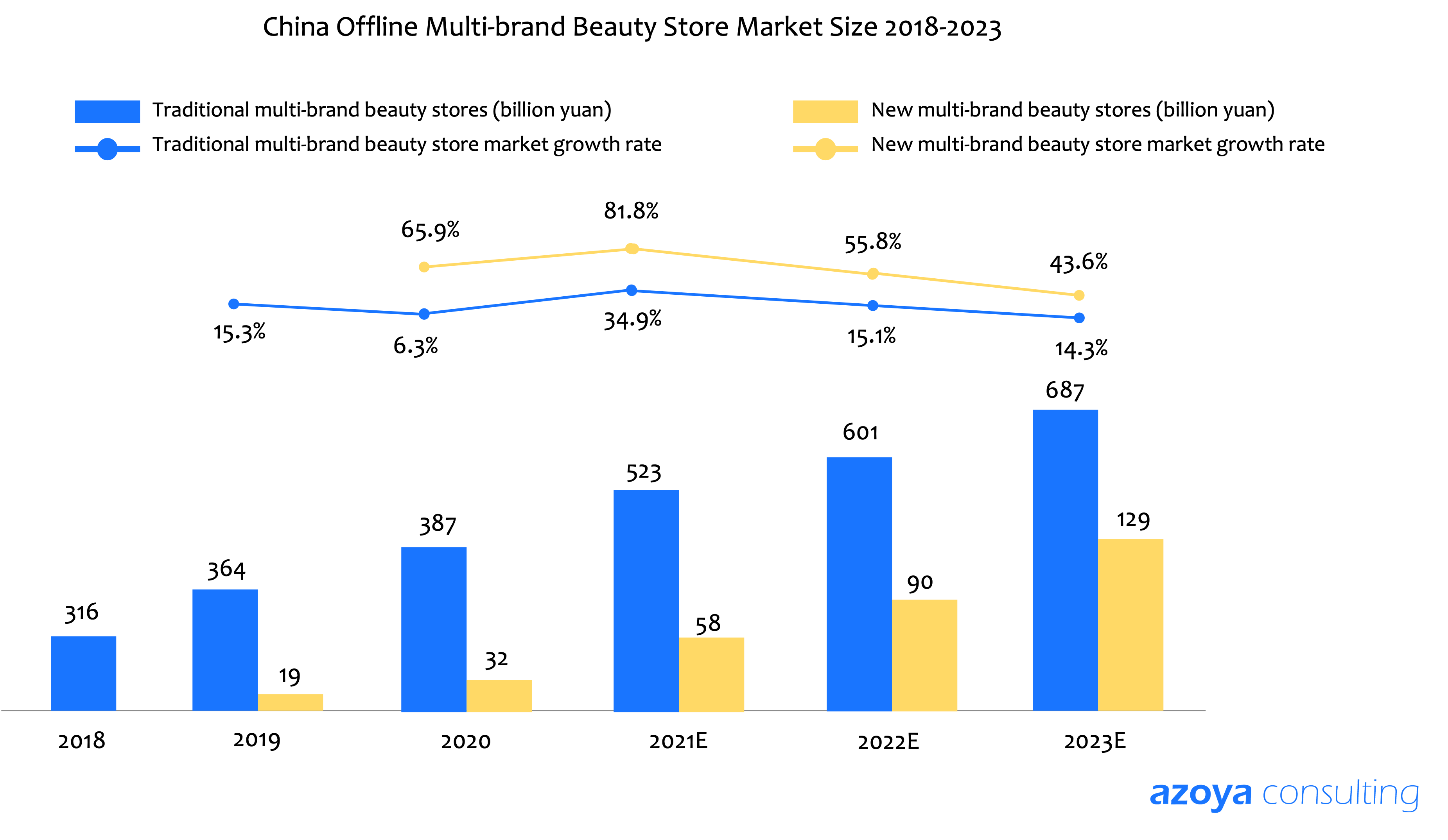
Understanding the growth of multi-brand beauty stores
l Market demand - The change of new beauty collection stores
The new multi-brand beauty stores are more in line with the needs and shopping preferences of young consumers, from product selection to scene layout (store design, scene experience). They focus on young consumers who pay attention to the shopping experience and cost-effectiveness. In addition, the abundance of brands is an important reason for consumers to favour new multi-brand beauty stores.
The consumption of beauty products by the new generation of users shows a trend of diversified categories and functional demands, and they are more willing to choose beauty products suitable for their own needs. The new multi-brand beauty stores have a higher tolerance for emerging brands, and they cooperate with design and personality brands. Therefore, the new type of beauty collection stores, including many emerging brands locally and abroad, are gradually gaining more consumers' favour. According to research data, 73.5% of consumers go to new multi-brand beauty stores because they can buy brands and products that are not available in traditional beauty collection stores.[2]
On the other hand, traditional multi-brand beauty stores have professional consultants who interact with consumers and promote products to them. Compared with beauty associates (BA) following shopping in traditional beauty collection stores, the new beauty collection store adopts a light BA mode, which also creates free shopping space and a pleasant shopping experience for consumers.
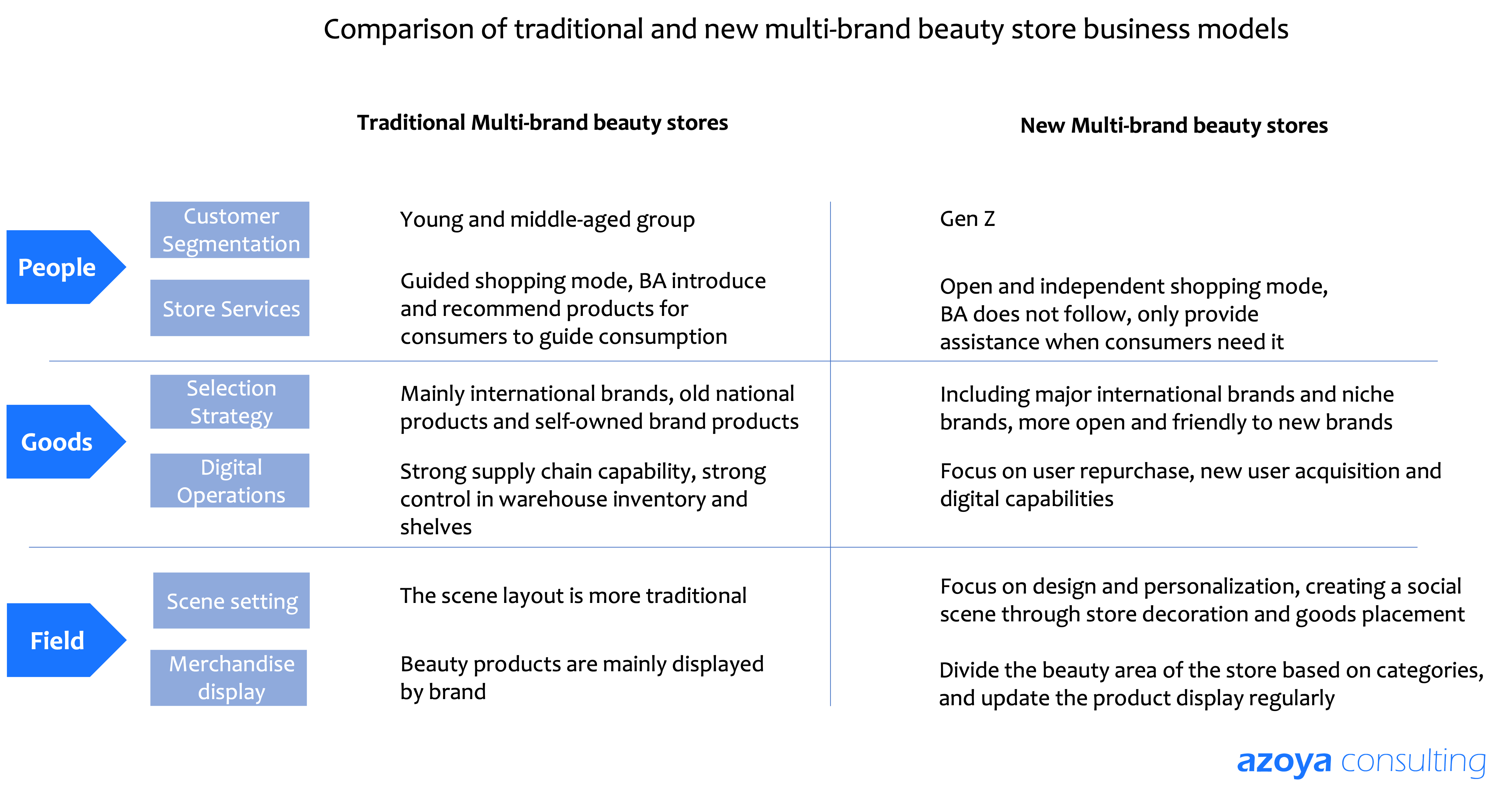
l Consumer demand - The younger generation pays more attention to the shopping experience
Compared with traditional beauty collection stores with relatively consistent in-store layout and design, the new multi-brand beauty stores bets heavily on the retail space design with big investments to attract young people to the store. The new beauty collection store provides a place for consumers to play, experience, buy, take photos, and share on social media. According to research data, about 50% of consumers believe that a sharable visiting experience for real-time fun on social media is also one of the main reasons to visit and shop from new beauty collection stores.
Many customers have traditionally found it difficult to negotiate and bargain for product samples, so now they find new beauty collection stores very generous with distributing samples from high-end brands. Small samples can satisfy consumers' curiosity and allow them to invest in lower trial costs when trying new brands or products and make purchase decisions more easily. The new beauty collection stores have captured the new generation of beauty users' demand for small sample products, and selling the samples as stand-alone products in stores at much lower prices helps brands generate considerable popularity.
Top 3 beauty collection stores in China showcases
l The Colorist
The Colorist, run by KK Group (Guangdong Kuaike E-Commerce), opened its first store in October 2019 in China, positioning itself as a go-to spot for both affordable and upscale beauty products. By June of 2021, The Colorist had expanded to over 300 stores in 20 cities nationwide.
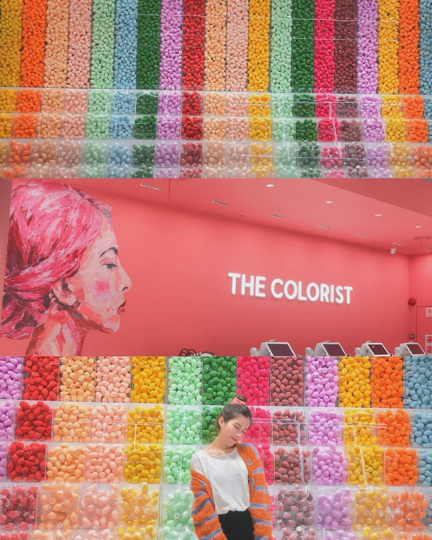
The Colorist stores are designed with bright colors, such as pink, orange, light purple, etc., giving them a more youthful feel that appeals to younger millennial consumers. Its rainbow-colored decor has become a selfie spot for consumers, who then post such photos on Weibo, WeChat, or other Chinese social media platforms.
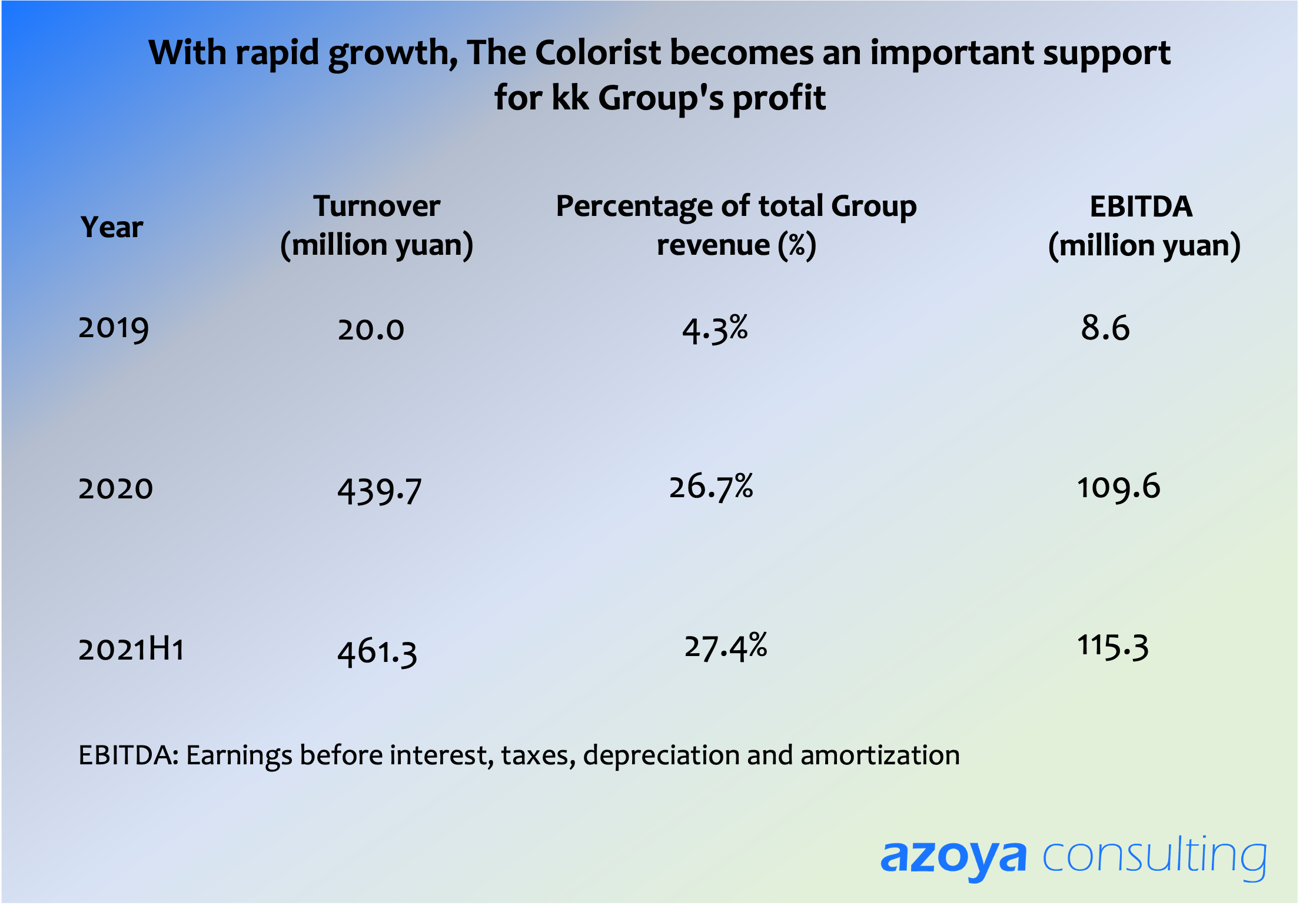
The Colorist, which only opened for business in 2019, has risen rapidly in popularity in just two years with a staggering 2887.5% CAGR in total merchandise transactions, second only to Watsons and Sephora in market share.[3] From 2018 to 2020, The net profit of KK Group was still negative, but The Colorist was always profitable. The Colorist has advantages not only in terms of capital, but also in terms of product category, service quality, and supply chain.
The Colorist prefers to select emerging brands, niche brands, and popular brands. According to the consumption data, the stores maintain impressive speed and efficiency with their product updates to fuel in-store traffic and sales. The wide variety of products is one of the reasons why The Colorist is popular. According to the official data of The Colorist, its stores cover 400+ global popular beauty brands with over 5,000 individual products. The assortment includes both familiar products, such as UNNY, and Canmake, and big cosmetics brands, such as La Mer, Farman, Chanel, Armani, and Dior.
l Harmay话梅
Harmay, founded in 2008, is known for its architecturally designed stores and niche brand offerings. In January 2022, Harmay secured US$200 million in series C and D rounds of financing.
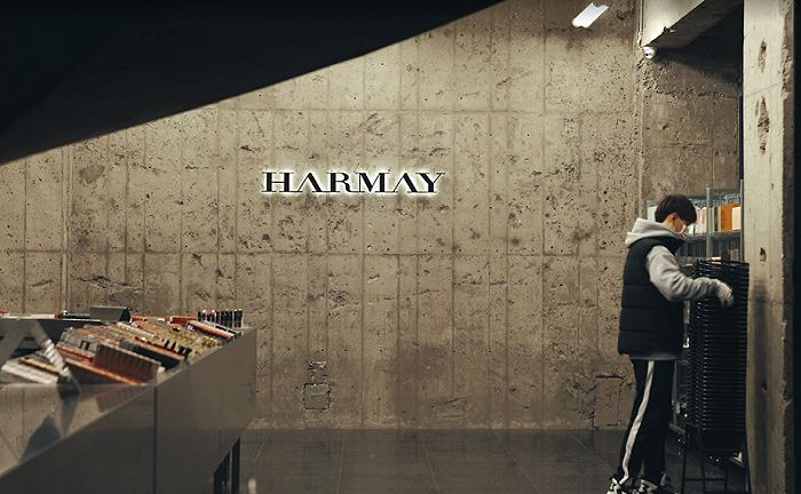
Harmay mainly sells mid-to-high-end brands, attracting traffic and improving full-size product conversion through big brand samples. In terms of price, the price of many international products in the Harmay store is also very attractive. Many products are discounted from the counter price, and some popular items like lipsticks may be out-of-stock at the traditional counter but they can be found at Harmay.
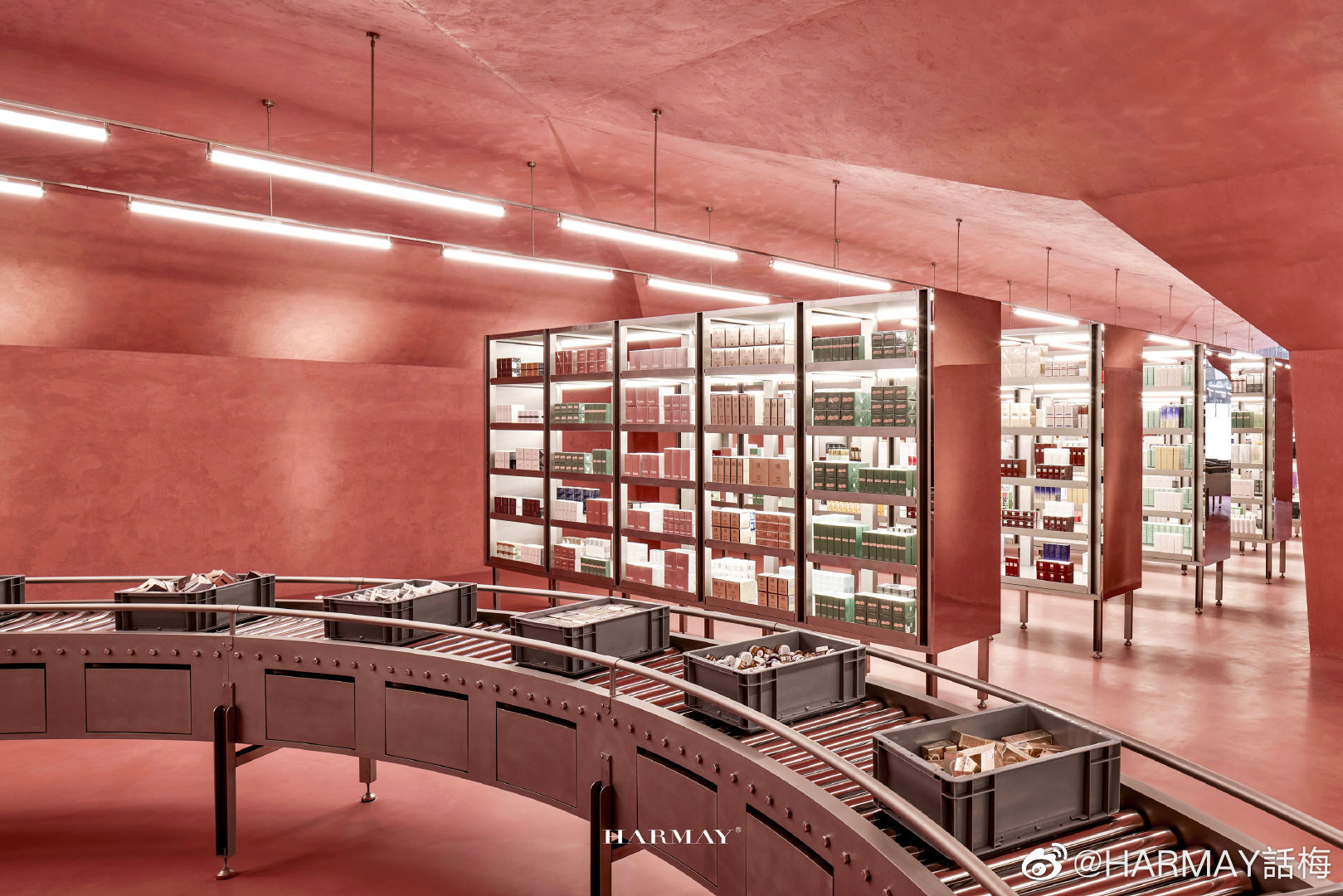
Harmay is different from other beauty collection stores in the market. Harmay does not have many offline stores, nor does it sell many domestic products in the store; it mainly sells foreign brands. At present, 50% of the SKUs in Harmay’s offline stores are overseas niche beauty brands.[4] Harmay has introduced a series of overseas niche brands through exclusive agency and capital operations, aiming to enhance brand differentiation and increase store repurchase rates.
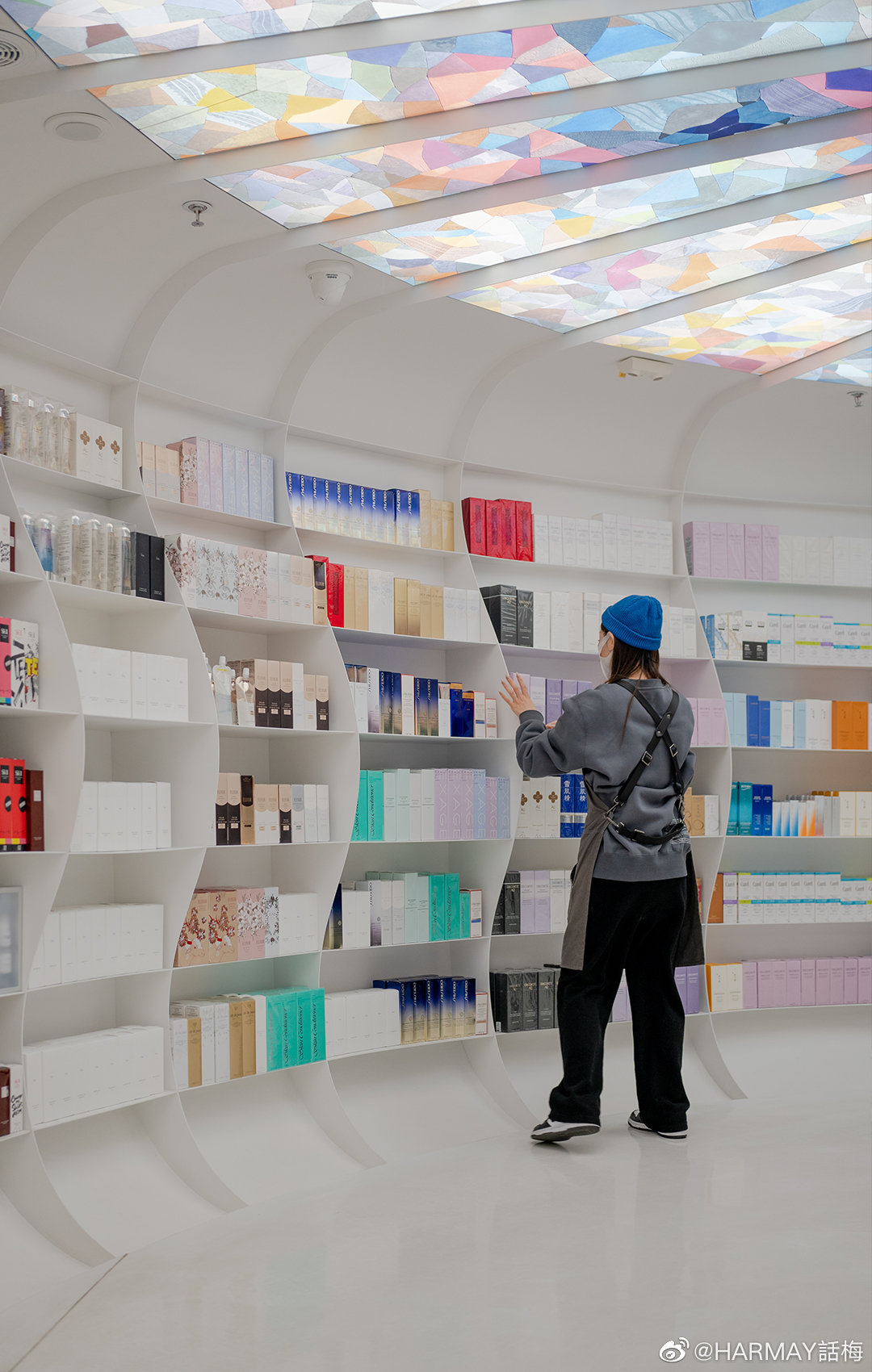
In addition to its offline stores, Harmay also operates a mini-program store, WeChat public account, and a Taobao store online. In addition to increasing sales, Harmay attracts traffic to its offline stores by promoting new product launches, special events, and new store openings. The offline stores will also guide consumers to register members in the checkout process, realizing the closed loop marketing.
It is reported that the impact of the pandemic on Harmay’s offline stores will not exceed 20%, and members play an extremely important role.[5] In terms of the construction of the membership system, Harmay tried to explore paid membership cards, which sold out as soon as they launched. The paid membership system can effectively bind high-quality members with strong stickiness, so that middle-tier and high-end users can enjoy differentiated membership services during the shopping process, thereby enhancing membership stickiness.
l H.E.AT喜燃
H.E.A.T, run by Guangzhou Yiran Daily Necessities, opened their first store in Guangzhou city in July 2020, and then went on to expand further to 10 stores within a mere six months. Their stores are spacious and clean with picture-perfect interior designs for eye-catching social media posts.
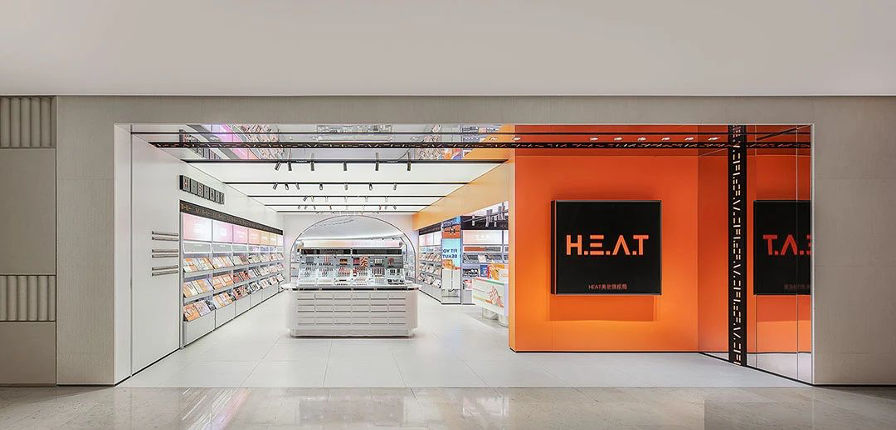
H.E.A.T’s target demographic is post-95s (or those born from 1995 onwards). They handle over 300 brands and over 4,000 SKUs worth of items and mainly focus on new Chinese brands, such as Perfect Diary, and niche brands from overseas.
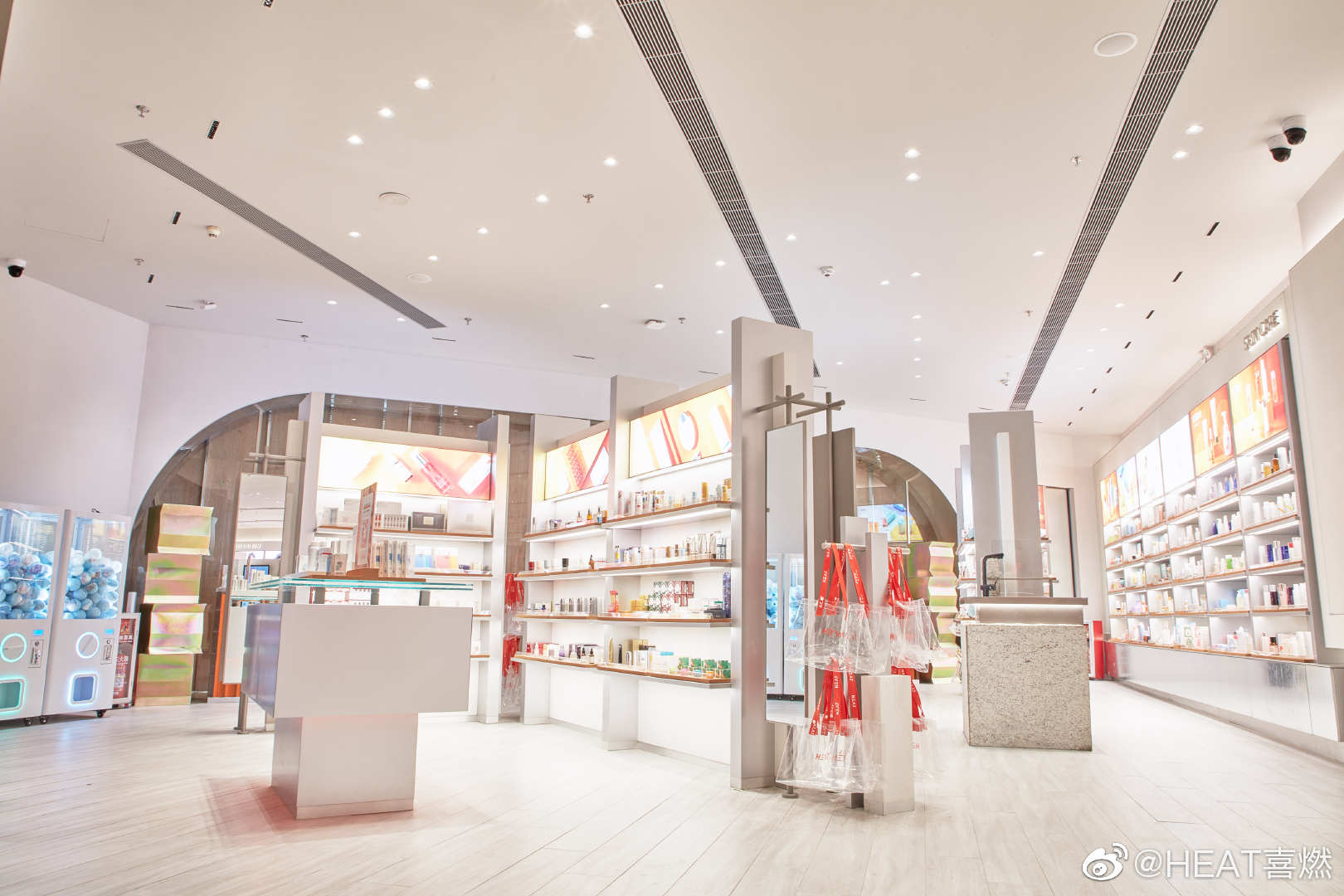
As the majority of new cosmetics brands mostly sell online, H.E.A.T stores are becoming places invaluable for trying out products firsthand before making a purchase. Along with a spacious testing corner, its stores also have full-body mirrors that allow visitors to select cosmetics to match their overall fashion. Meanwhile, the company is also running an e-commerce business, having set up an online store as a WeChat mini program in November 2020. The aim is to improve user stickiness.
Looking ahead at multi-brand beauty stores in China
Although e-commerce channels have become the main sales channels in China's beauty market, the experience attribute of offline channels can provide more comprehensive services for beauty consumers, and the offline consumption demand is irreplaceable.
However, the increase of new entrants has led to fierce market competition. How to avoid homogenization, how to break out from the ultimate competition, and how to improve customer loyalty, are the key points that multi-brand beauty collection stores need to pay attention to.
Traditional collection store brands are also seeking changes. Watsons is scaling back the number of domestic brands and its own brands, and introducing Korean beauty brands such as LUNA, the SAEM and I'M MEME. They are increasing the number of pop-up products to increase sales and gain greater profit margins. Secondly, Watsons has adopted more trendy makeup elements to decorate its stores. Watsons' traditional blue and white stores are gradually being replaced and are now decorated with more trendy makeup elements, attracting young people to take photos. In addition, Watsons has reshaped the image of its store BA guides through training to improve their service level and drive sales.
In addition to Watson, Sephora has also actively explored digitalization. Sephora leveraged the WeChat official mini-program store to connect online and offline sales channels, and accumulate and operate on private domain customers to provide an omnichannel shopping experience. Also, Sephora launched the Smart BA project. Through this project, beauty advisors can continuously communicate with consumers on WeChat and provide them with personalized services, such as reminding consumers who "placed an order yesterday but did not pay" to complete their orders and reduce churn.
The system also provides real-time transaction data billboards, which can calculate online-related sales into actual performance, effectively motivating "Beauty Advisors" to achieve their performance targets.
According to the survey data, one of the main reasons why 42.2% of consumers choose to shop in new beauty collection stores is that product prices are cheaper than in traditional beauty counters and online official stores. However, peak session shopping festivals and China's duty-free market have also had an impact on the price advantage of new beauty collection stores. In comparison, the price advantage is not obvious, and it is difficult to attract price-sensitive consumers over the long term.
Moreover, the digital operation of new beauty collection stores within the user lifecycle is mostly in the stage of guiding member registration and attracting traffic to online channels. In the future, it needs to be further strengthened as a membership mechanism through user refinement management, the value of private domain traffic and other best practices.
[1] iResearch: China Beauty Collection Store Industry Report 2021, 2021; URL
[2] iResearch: China Beauty Collection Store Industry Report 2021, 2021; URL
[3] Pengpai: Traditional multi-brand collection store, now can't catch up with young people, 2022; URL
[4] Jiemian: New beauty collection store Harmay starts acquiring overseas brands, 2021; URL
[5] Shopex: Explaining the beauty collection store Harmay, 2021; URL